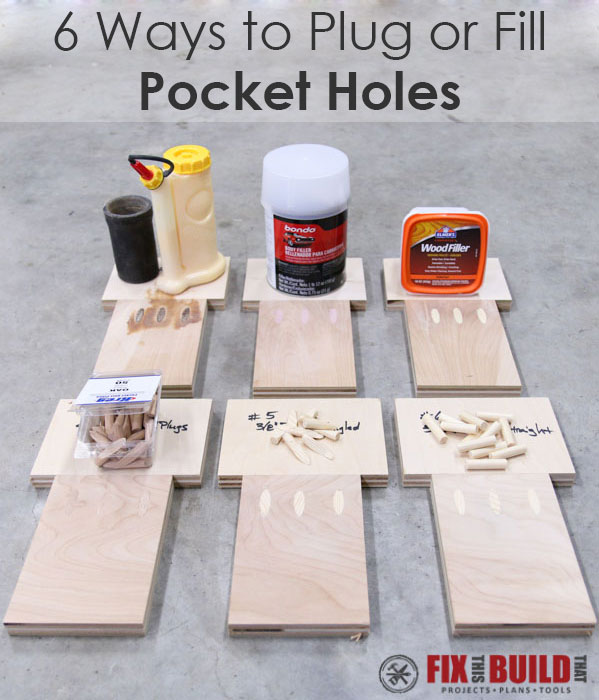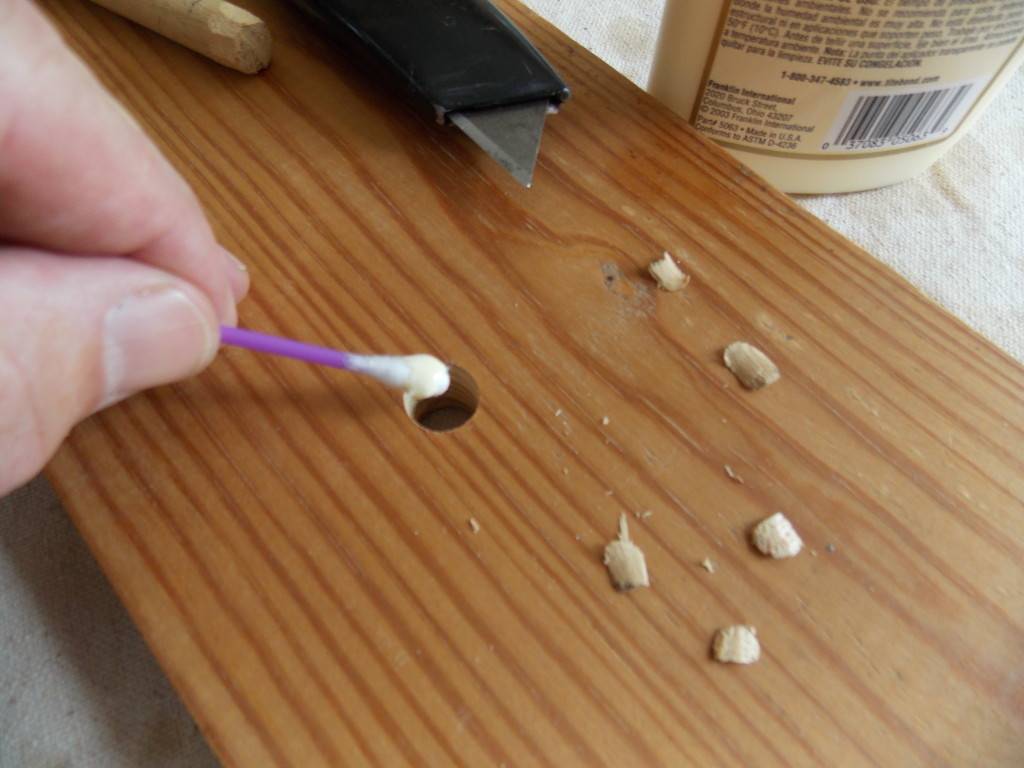Are you wondering if wood glue can be used to fill screw holes? Well, you’re in the right place!
Imagine this: you’re working on a woodworking project, and you’ve just finished screwing pieces of wood together. But wait, there are unsightly screw holes staring back at you. Don’t worry, because I’m here to shed some light on whether wood glue can come to the rescue!
So, if you’re ready to learn about this nifty trick, grab your tools and let’s dive in!
– Start by cleaning the screw hole and removing any debris.
– Squeeze wood glue into the hole until it’s filled.
– Use a putty knife or scraper to level the wood glue with the surface.
– Allow the glue to dry completely.
– Sand down the area for a smooth finish.
Whether you’re filling small holes or working on a larger project, wood glue can be a handy solution. Just make sure to follow these steps for the best results!

Can You Use Wood Glue to Fill Screw Holes?: Exploring the Possibilities
Wood glue is a versatile adhesive that is commonly used in woodworking projects. One question that often arises is whether wood glue can be used to fill screw holes. In this article, we will explore the possibilities of using wood glue for this purpose, examining its effectiveness, benefits, and potential drawbacks.
Why Wood Glue Might be Suitable for Filling Screw Holes
Wood glue can be a viable option for filling screw holes, especially when the holes are small or shallow. The adhesive properties of wood glue allow it to bond effectively with both the wood surrounding the hole and the screw itself. This can provide stability and strength, preventing any movement or loosening of the screw. Additionally, wood glue is readily available, affordable, and easy to use, making it a convenient solution for small-scale repairs or projects.
When using wood glue to fill screw holes, it is important to ensure that the hole is clean and free from any debris or loose wood fibers. Applying a small amount of wood glue to the hole and allowing it to dry completely can create a solid and secure bond. However, it is worth mentioning that the effectiveness of wood glue in filling screw holes may depend on the size and depth of the hole, as well as the specific application or project.
It is worth noting that while wood glue can provide temporary stability and support, it may not be as durable or long-lasting as other methods of filling screw holes, such as using wooden plugs or wood putty. In situations where the screw holes will be subjected to frequent stress or movement, it may be advisable to explore alternative options that offer greater durability and strength.
Benefits of Using Wood Glue to Fill Screw Holes
Using wood glue to fill screw holes offers several benefits that make it a viable option for certain projects. Firstly, wood glue is readily available in most hardware stores, making it easily accessible for DIY enthusiasts and professionals alike. Its affordability also makes it an attractive choice for those on a budget.
Furthermore, wood glue is easy to work with and dries relatively quickly, allowing for efficient repairs or modifications. It also blends seamlessly with the wood surface, creating a visually appealing finish. Additionally, using wood glue can restore the structural integrity of the screw hole, preventing any further damage or deterioration.
Another advantage of using wood glue to fill screw holes is that it can be sanded, painted, or stained to match the surrounding wood, providing a seamless and aesthetically pleasing result. This versatility makes wood glue a versatile option for various woodworking projects.
Potential Drawbacks and Limitations of Using Wood Glue
While wood glue can be an effective solution for filling screw holes, it is important to be aware of its limitations. One potential drawback is its durability in high-stress or high-movement scenarios. Wood glue may not be able to withstand constant pressure or movement, which could eventually result in the screw hole becoming loose or compromised.
Another limitation is the potential difficulty of removing wood glue in the future. If the need arises to adjust or remove screws, the presence of wood glue can make it more challenging to disassemble or make modifications. This is particularly relevant if the project or structure needs to be disassembled and reassembled multiple times.
Additionally, the effectiveness of using wood glue to fill screw holes can vary depending on the specific wood type and the size and depth of the hole. In some cases, it may be necessary to explore alternative methods or materials to ensure a stable and long-lasting repair.
Tips for Using Wood Glue to Fill Screw Holes
When using wood glue to fill screw holes, it is important to follow a few tips to ensure the best results. Firstly, clean the hole thoroughly, removing any debris or loose wood particles. This will ensure optimal adhesion and prevent any issues with the bond.
Apply a small amount of wood glue to the hole, allowing it to fill the space adequately. Avoid using excessive amounts, as this can cause the glue to overflow or create a messy finish. Once the glue is applied, allow it to dry completely according to the manufacturer’s instructions.
After the wood glue has dried, sand the surface if necessary to create a smooth and seamless finish. This step is especially important if you plan to paint, stain, or varnish the wood. Remember to follow appropriate safety precautions when working with wood glue, such as wearing gloves and ensuring proper ventilation in the workspace.
Alternative Methods for Filling Screw Holes
While wood glue can provide a suitable solution for filling screw holes in certain scenarios, there are alternative methods that may be more appropriate depending on the specific circumstances. One common alternative is the use of wooden plugs or dowels. These can be fitted into the screw hole, creating a sturdy and lasting repair.
Another option is the use of wood putty or filler. These materials can be easily molded and shaped to fill the screw hole, providing a smooth and invisible finish. Wood putty is available in various colors, allowing for seamless blending with the surrounding wood.
Before deciding on the method to use, consider factors such as the intended use of the project, the amount of stress or movement the screw hole will experience, and the desired aesthetic result. Consulting with a professional or conducting research specific to your project can provide valuable insights and guidance.
Conclusion
In conclusion, wood glue can be a viable option for filling screw holes, particularly when the holes are small or shallow. It offers benefits such as affordability, accessibility, and ease of use. However, it is important to consider the limitations of using wood glue, such as its durability in high-stress scenarios and potential difficulty in removing it in the future. Exploring alternative methods like wooden plugs or wood putty may provide more suitable options for specific projects. Ultimately, the decision on whether to use wood glue to fill screw holes will depend on the specific circumstances, project requirements, and personal preferences.
Key Takeaways: Can You Use Wood Glue to Fill Screw Holes?
- Wood glue can be used to fill small screw holes in wood.
- Apply a small amount of wood glue to the hole and let it dry.
- Sand the area gently to create a smooth surface.
- This method is best for small holes and not suitable for larger ones.
- It’s important to choose a high-quality wood glue for better results.
Frequently Asked Questions
Have you ever wondered how to fill screw holes using wood glue? Look no further! We’ve got the answers to your questions right here!
Q1: What is the purpose of filling screw holes with wood glue?
When you’re working on a woodworking project, filling screw holes with wood glue serves multiple purposes. Firstly, it helps to create a solid bond between the screw and the wood, making it less likely for the screw to come loose over time. Secondly, it helps to fill any gaps or voids around the screw, creating a smoother and more seamless finish. Lastly, it adds extra strength to the screw joint, reinforcing the overall stability of your project.
By filling screw holes with wood glue, you can ensure that your woodworking project not only looks great but also stays sturdy and durable in the long run.
Q2: Can any type of wood glue be used to fill screw holes?
Yes, you can use various types of wood glue to fill screw holes, but it’s important to choose the right one for the job. The best type of wood glue for filling screw holes is a PVA (polyvinyl acetate) or carpenter’s glue. These glues are specifically designed for woodworking projects and offer excellent bond strength and durability. They also dry clear, making them ideal for filling small holes and imperfections.
Remember to always check the label to ensure that the wood glue you’re using is suitable for your specific project and follow the manufacturer’s instructions for the best results.
Q3: How do you fill screw holes with wood glue?
Filling screw holes with wood glue is a simple process. First, remove any old screws or debris from the hole. Then, apply a small amount of wood glue to the hole using a toothpick or a small brush. Make sure to fill the hole completely without overfilling it. Once the hole is filled, wipe away any excess glue with a damp cloth.
Allow the wood glue to dry completely before sanding or finishing your project. This will ensure a smooth and seamless surface. Remember to follow the manufacturer’s instructions for drying time, as drying times can vary depending on the type and brand of wood glue you’re using.
Q4: Can wood glue be sanded and painted over once it’s dry?
Yes, once the wood glue has dried completely, it can be sanded and painted over just like the surrounding wood. Use a fine-grit sandpaper to smooth out the filled screw hole until it’s flush with the surface of the wood. Be careful not to sand too aggressively, as this can damage the surrounding area.
After sanding, you can apply paint, stain, or any other finish to match the rest of your project. Just make sure to follow the appropriate steps for your chosen finish and allow it to dry completely before handling or using your completed woodworking piece.
Q5: Are there any alternative methods to fill screw holes besides wood glue?
Absolutely! If you don’t have wood glue on hand or prefer to use an alternative method, there are other options available. One common alternative is using wood filler or putty. Wood filler is a paste-like substance that can be pressed into the screw hole, similar to wood glue. Once dried, you can sand it down and finish it just like you would with wood glue.
Another option is using wooden dowels or toothpicks. By inserting a dowel or toothpick into the screw hole and breaking it off, you can create a snug fit that simulates the use of wood glue. This method can be especially useful when dealing with larger screw holes or when additional strength is required.

Summary
Using wood glue to fill screw holes is a quick and simple solution. The glue creates a strong bond and helps prevent further damage to the wood. However, it’s important to note that this method is not suitable for every situation.
Make sure to clean the area before applying the glue and use a small amount to avoid excess. Once the glue is dry, you can sand it down and paint or stain the wood to blend it in. Remember, wood glue may not be as durable as other options like wood plugs or putty, so consider the specific needs of your project before making a decision.
